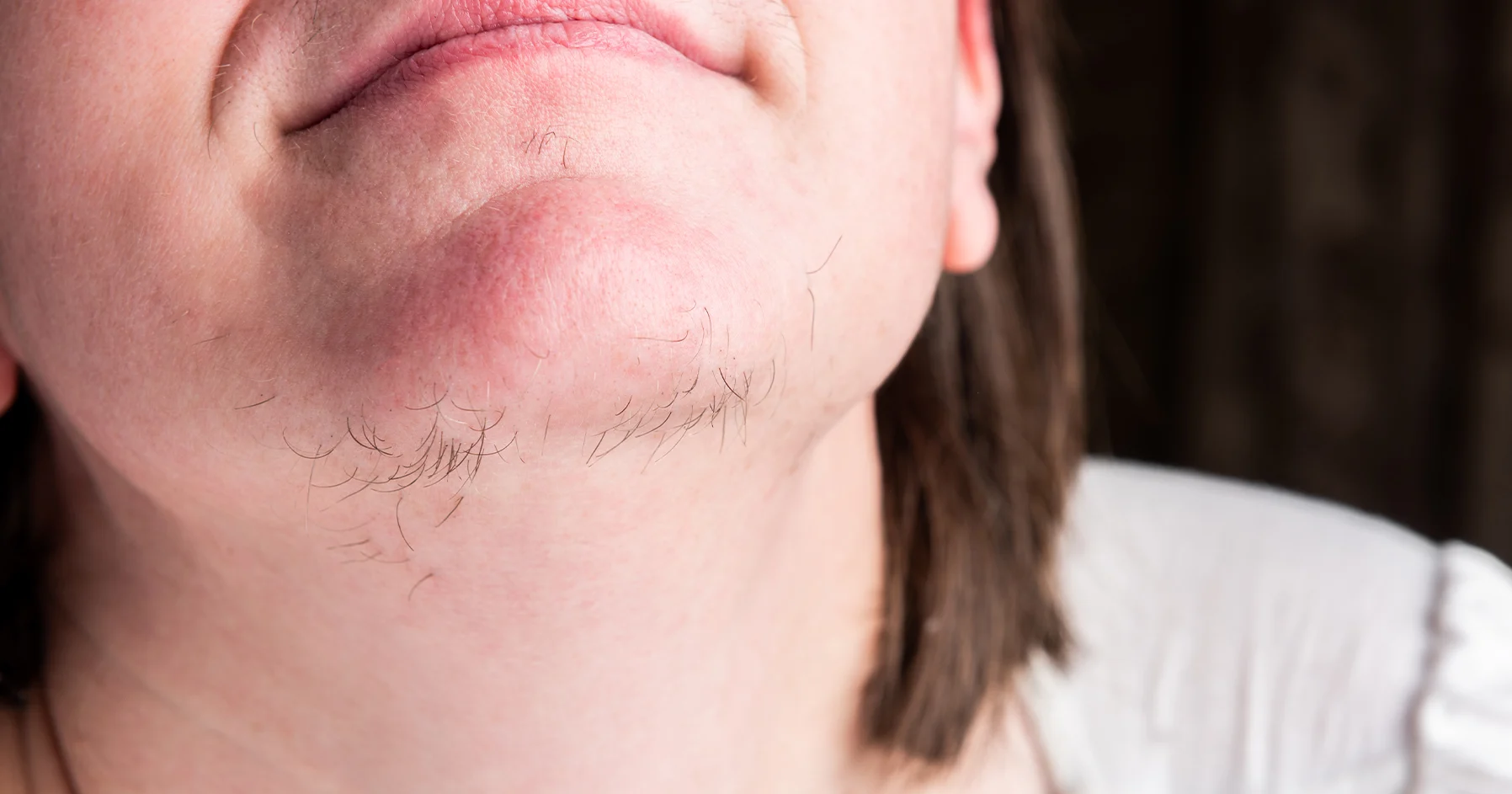Say goodbye to your unwanted hair growth with the help of Hairrich Hair Restore Center, the best treatment for Hair Removal in Kurnool.
Unwanted hair or excessive hair that grows on a woman’s face and body is the result of a condition called Hirsutism; though all women have facial and body hair, the hair is usually very fine and light in color.
Hirsutism is defined as the presence of terminal (coarse) hairs in females in a male-like pattern. It affects 5-10% of women. It is the most common cosmetic problem in women.
Hypertrichosis is a term applied to excessive hair growth developed all over the body or can be in small patches. It can present at any age, sex, and race. Hypertrichosis may be congenital (present at birth) or acquired (arises later in life).
Hirsutism is often a sign of underlying disorders. Hirsutism is usually due to increased androgen (testosterone) levels in females. The increased production of androgens is called hyperandrogenism, either due to adrenals or to an ovarian. Hirsutism is attributed either to increased production or increased sensitivity of the hair follicles to circulating androgen (testosterone).
The causes of hirsutism can be divided into:
Non-androgenic causes of hirsutism are relatively rare like acromegaly, the excess hair growth. Non-androgenic anabolic drugs will cause a generalized growth of many tissues, particularly vellus hair. It is called vellus hypertrichosis and not hirsutism. However, coarsening of the hairs may develop with chronic skin irritation.
Androgenic causes: the most common cause of hirsutism, accounting for approximately 70-85% of such patients. Androgen disorders include:
Hyperprolactinemia by increasing adrenal dehydroepiandrosterone sulfate (DHEA-S) production may cause hirsutism.
Hirsutism can also occur in some premenopausal women and continue for a few years after menopause. This is due to a decrease in ovarian estrogen secretion with continuous androgen production.
5α-reductase activity in the body is increased by local growth factors and circulating androgens. This enzyme helps in the conversion of testosterone to dihydrotestosterone (DHT). In body hair, DHT stimulates.
(PCOS) is one of the most common (3 out of 4) causes of hirsutism. Benign ovarian cysts cause increase hormone production, leading to irregular menstrual cycles, moderate to severe acne, and overweight. Other symptoms such as fatigue, mood changes, pelvic pain, headaches, sleep problems, and infertility. About 50% of PCOS patients demonstrate insulin resistance and secondary hyperinsulinemia, this increases the risk for type 2 diabetes mellitus.
The other causes of unwanted hair are due to hormonal imbalance related to adrenal gland disorders such as:
The adrenal glands are located just above the kidneys, are responsible for hormone production. Cushing’s disease has high levels of cortisol. Cortisol is also called the stress hormone. Congenital adrenal hyperplasia is born without an enzyme, which is necessary for hormone production. These conditions can affect the way your body produces androgens. The usual symptoms of adrenal gland disorders are excess weight in the upper half of body, headaches, high blood pressure, bone and muscle weakness, and high or low blood sugar levels
Drugs: Excessive facial or body hair growth can be due to any of the following medications:
Idiopathic Hirsutism: in about 20% of the patient, present with normal androgen levels and ovarian function and called Idiopathic hirsutism (IH). The cause of unwanted hair in these women could be related to disorders in peripheral androgen activity. Idiopathic hirsutism occurs shortly after puberty with slow progression. The 5α reductase activity in the skin and hair follicle is overactive, leading to hirsutism in the face with normal circulating androgen levels. It’s usually chronic and may be harder to treat.
Most of the women adopt hair removal techniques to manage unwanted or excessive hair.
Waxing, shaving, plucking, and depilatories: Though simple and inexpensive, these methods are temporary. They have side effects like physical discomfort, scarring, folliculitis, irritant dermatitis, or discoloration. These methods are adopted by many women to keep their legs, bikini line, and underarms free of hair.
Electrolysis is an older day’s technique to remove each hair follicle permanently; hence the sessions can take a long time. Here the electric current is used to remove the hair. The disadvantage being difficult to treat large areas like hairs on the chest or upper back, time-consuming, painful, and cause pigmentation or scarring.
Laser hair removal has gained wide popularity in the past two decades and can achieve a permanent reduction of hair. Laser hair removal is most ideal for idiopathic hirsutism with normal androgen levels. Lasers work on the principle of selective photo thermolysis where the laser energy acts specifically to destroy the target (melanin). The laser energy works only on growing or anagen hair follicles. Therefore, multiple treatments are required to get significant results. With sufficient treatments, laser hair removal can provide permanent or near-permanent results.
Lifestyle changes: play an important role, maintaining a healthy weight can correct the androgen levels without the use of medication. Diet and exercise are primarily required for women with PCOS. Weight loss should be advised for all obese women.
Oral medical treatment is required if excessive hair growth is a symptom of PCOS or adrenal disorders. Hence the drugs are indicated if there is an increase in androgens, and the hyperandrogenism is confirmed by various laboratory tests. The following drugs can be used:
Laser Hair Removal of unwanted hair works on the principle of selective damage of hair roots without harming the skin where laser light energy is absorbed by the black pigment in the hair root.
Familial without hormonal problems in most of the patients. Few patients who also have severe acne, hair fall may have underlying hormone problems. Hormone tests and Ultrasonography of pelvis may be done to detect the same. Medical treatment may be required to correct the hormonal problem if present. Obesity and stress also contribute to excess hair growth.
In women; upper lip, chin, cheeks, sideburns, anterior neck, upper margin of eyebrows, arms, legs, chest, abdomen, armpits, bikini line, and in Men; cheeks, ears, chest are commonly treated.
Indian skin is considered as brown skin. Long pulsed Nd-YAG and Diode lasers are equally effective in Indian patients. Long pulsed Nd-YAG Laser is safer in Indian Skin irrespective of Diode laser being Gold Standard.
There is a mild burning sensation or a rubber band snapping during the treatment which is tolerated well by most patients.
Practically nil with experienced doctors. Skin cooling with the chilled laser tip protects the skin from damage. Temporary redness may be seen which subsides within a day or two.
Generally, 6-8 sittings with a gap of 4-12 weeks are required for permanent hair reduction. Some patients require maintenance treatments.
After the treatment, you may have to apply topical antibiotics with steroid cream and sunscreen lotion for 5 to 7days. You should avoid harsh cleansers and should avoid scrubbing in the treated area for at least 4 to 5days after the treatment.
No. Shaving only removes the visible hair shaft above the skin level without disturbing the hair root inside the skin. When the hair is regrowing, the cut hair with blunt tip appears coarse but as the full hair growth completes, hair again appears fine with its tapering end.
Shaving or trimming the hair is advisable between the laser treatments. Bleaching, threading or waxing should be avoided for at least 2 weeks prior to laser treatment.
The laser works only on black hair. Grey/ white hair can not be removed with a laser, which can be removed with Ellman Radiolysis

